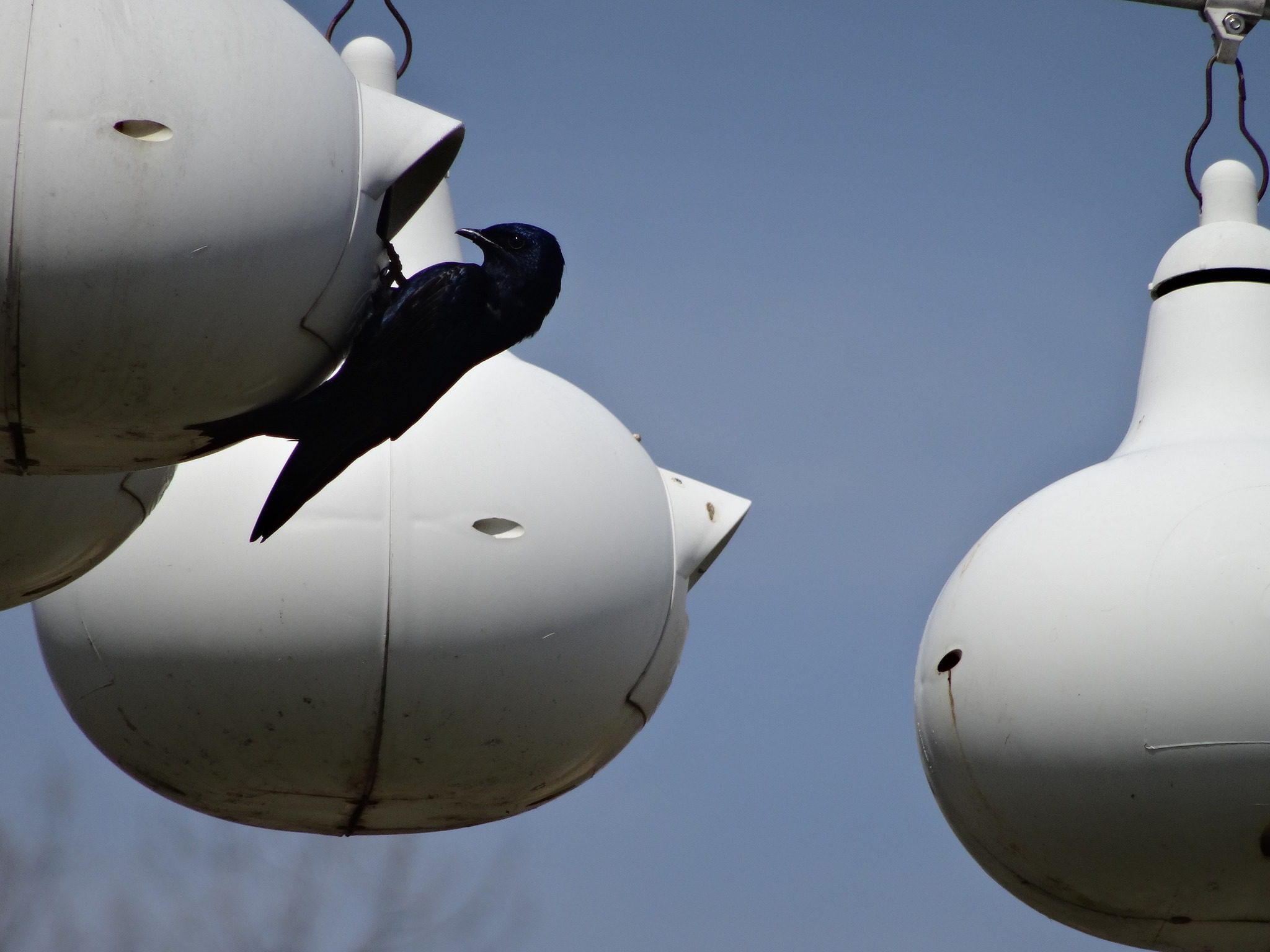The animals at the Woodlands Nature Station are rescued wildlife that are non-releasable due to an injury, being orphaned, or imprinting on people. These animal ambassadors represent wild species found naturally in Land Between the Lakes National Recreation Area today or in the past.
Barkley
Bobcat (Lynx rufus)
Barkley the bobcat was found as an eight-week-old kitten severely injured by a car in 2016. During his recovery, he lost his natural fear of humans and could not be released into the wild. Bobcats are numerous but secretive. It is estimated there are over 250 bobcats in the forested bottomlands of Land Between the Lakes.
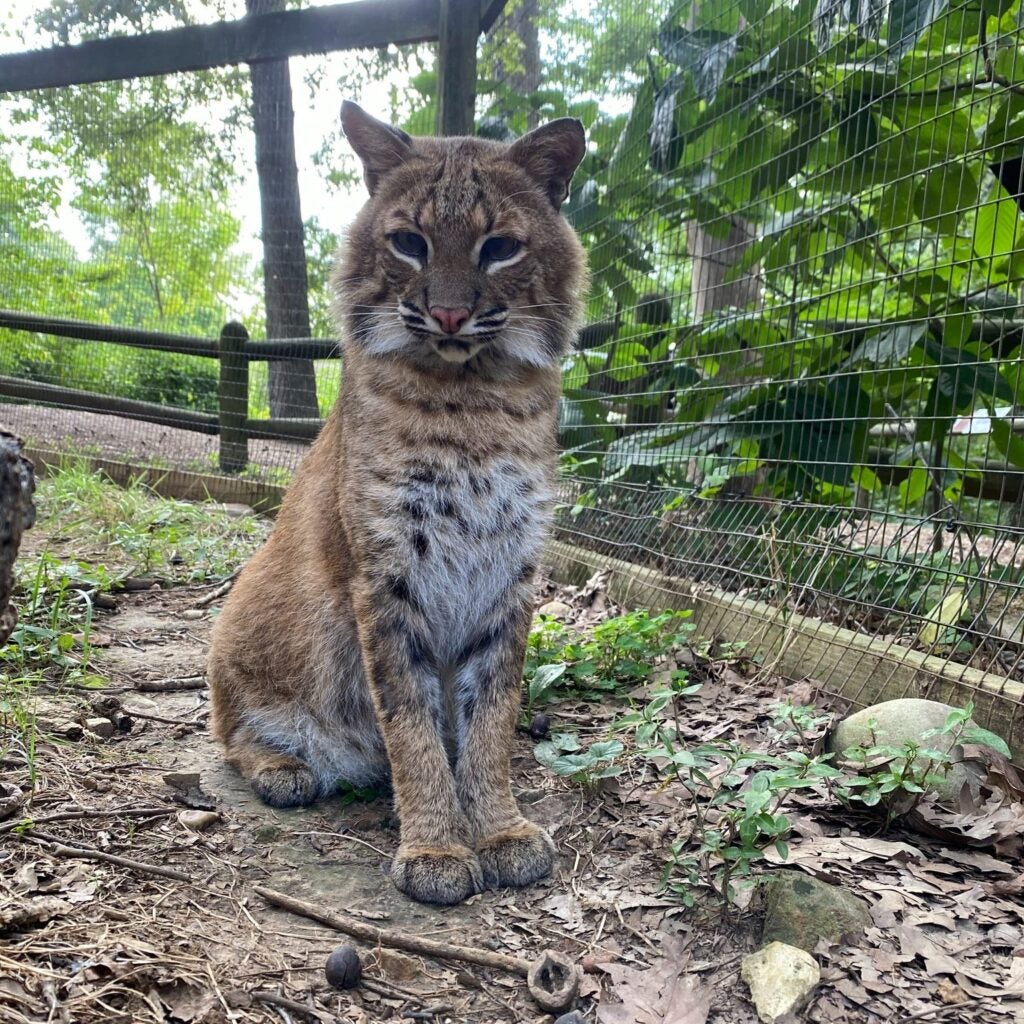
Percy & Ember
Red Wolves (Canis rufus)
Percy and Ember are a brother and sister pair that were born at Zoo Knoxville in 2018. While once common in the Land Between the Lakes area, red wolves are no longer found here in the wild as their range is restricted to northeastern North Carolina. Red wolves are a critically endangered species and the Woodlands Nature Station is a part of a species recovery program to hopefully bring this majestic wolf back from the brink.
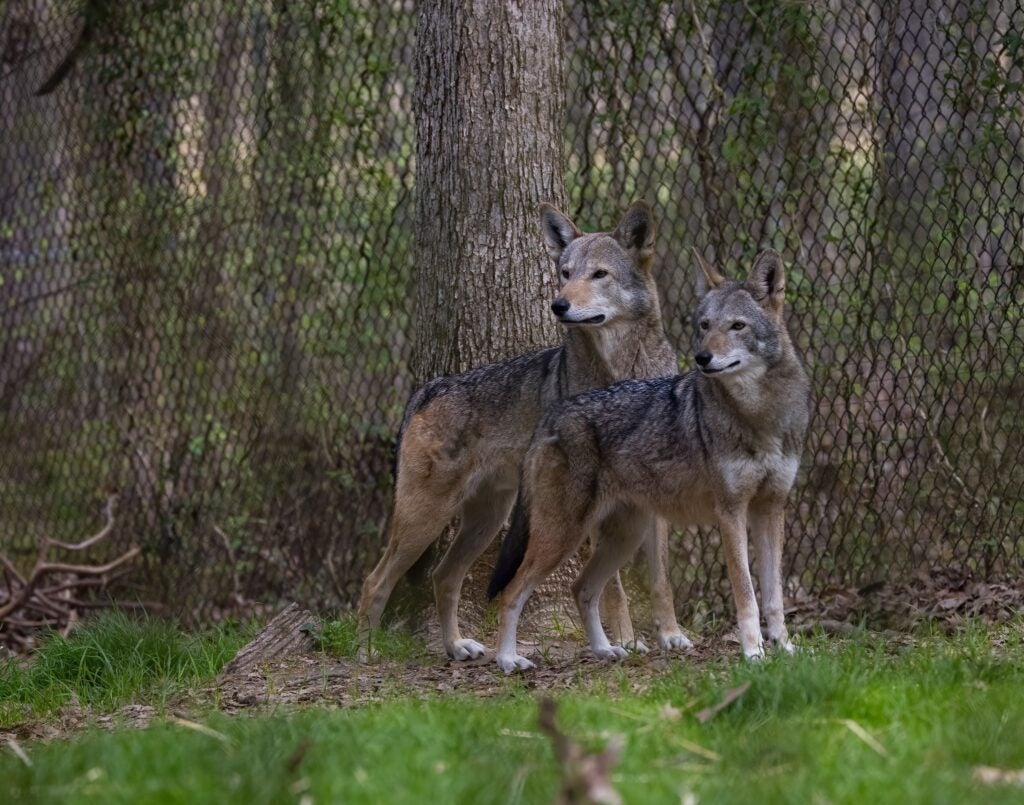
Tahahente (“Daha”)
Bald Eagle (Haliaeetus leucocephalus) Tahahente came to the Woodlands Nature Station from the American Eagle Foundation, where she recovered from a gunshot wound to her wing. Due to her injury, she had to have one of her wings partially amputated. Bald eagles are a national symbol of the United States, and Land Between the Lakes has several dozen nesting pairs, making it one of the best places to see bald eagles in Kentucky.
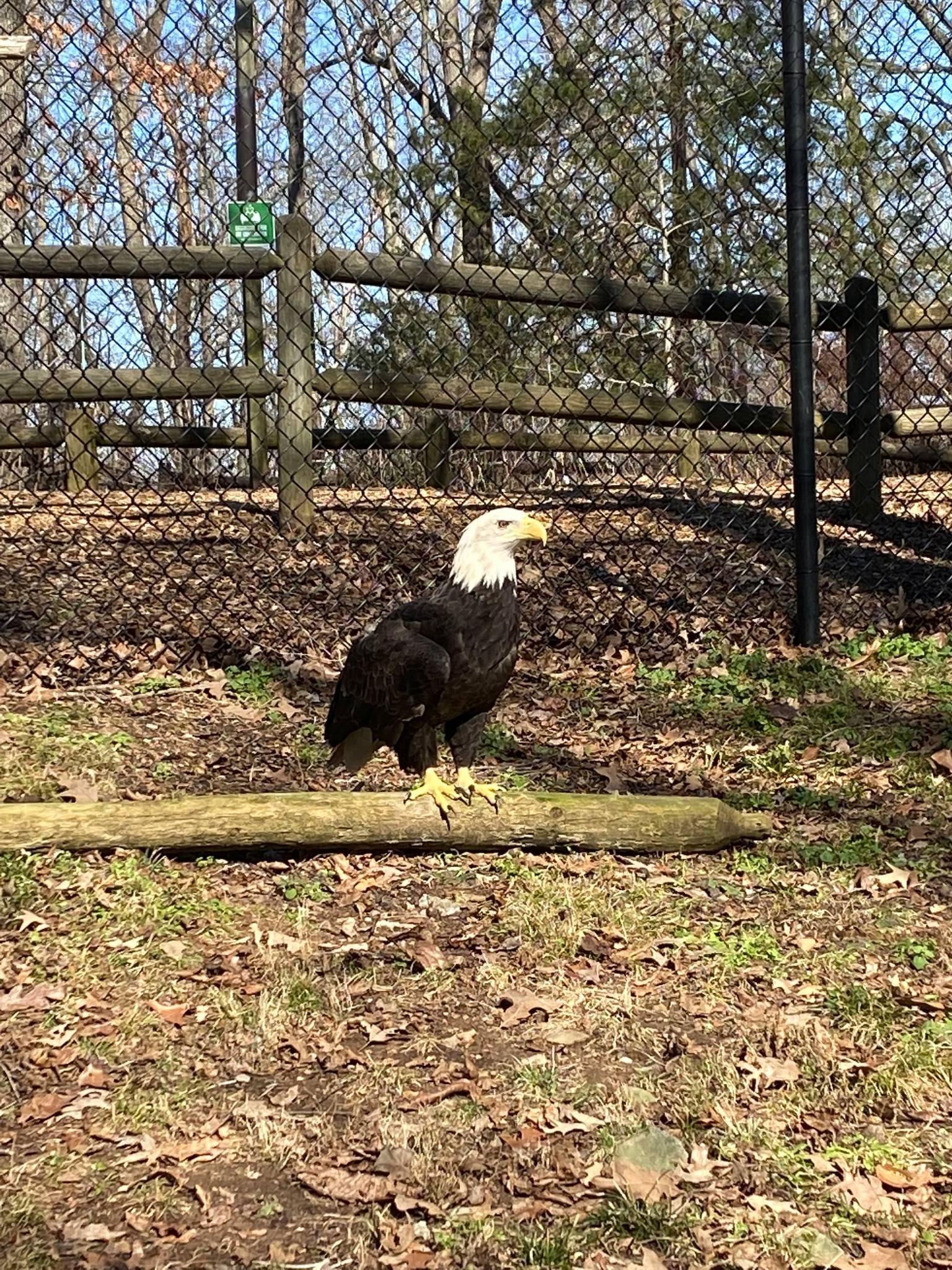
Birds of Prey
Several species of birds of prey are commonly seen all throughout Land Between the Lakes. Our rescued great-horned owl, red-tailed hawk, eastern screech owls, American kestrel, barn owl, and barred owl represent a few of the species found here. Our raptors have suffered injuries or have become imprinted on people so that they no longer can survive in the wild. Each day they sit outside on perches for enrichment, and overnight they go inside their night house or “mew” to stay safe and get their meals. To learn more about birds of prey and meet our birds, catch our “Parade of Raptors” program every day at 4:30pm.
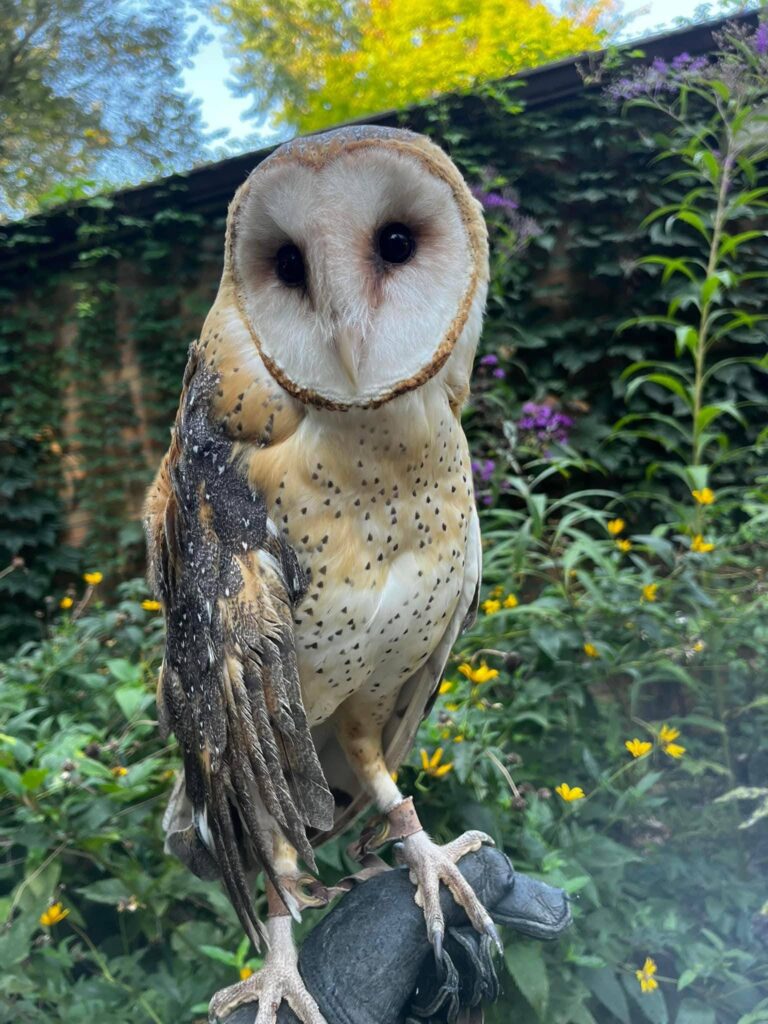
Cadiz & Campbell
Coyotes (Canis latrans) Cadiz and Campbell the coyotes were both raised by humans and lost their natural fear of people, making them unable to be released back into the wild. Coyotes are very common here but have moved into Kentucky and Tennessee fairly recently. Historically, they roamed the deserts and prairies of central North America, but have since expanded their range to include most of the continent
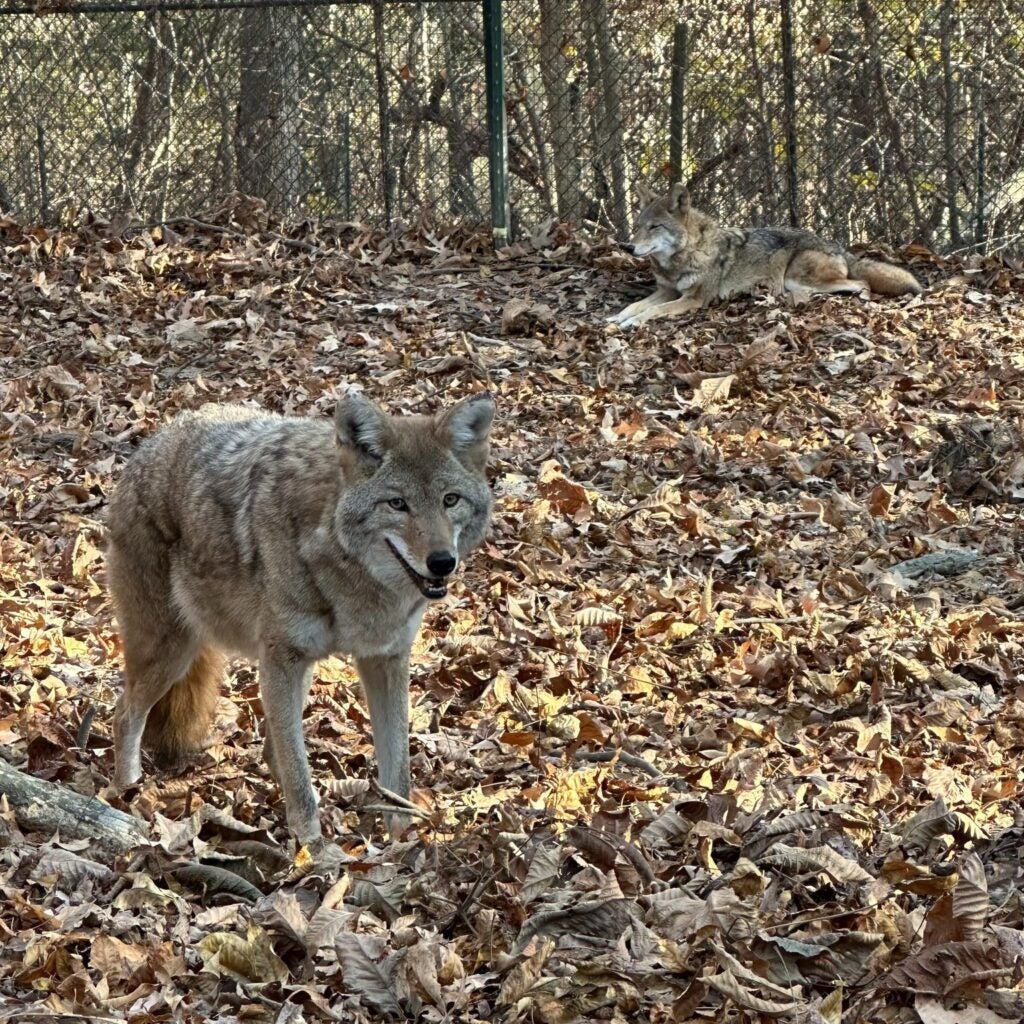
Turtles
From Bob the fifty-pound alligator snapping turtle to our tiny musk turtle, seven species of turtle call the Woodlands Nature Station home. Many of our turtles came from people’s homes, where they were kept as pets. Alligator snapping turtles are North America’s largest freshwater turtle species and can weigh up to 250 pounds when fully grown. Turtle shells are made of bone and connected to the turtle’s skeleton, and are covered by keratin scales. Keratin is the same material that makes up our hair and fingernails!
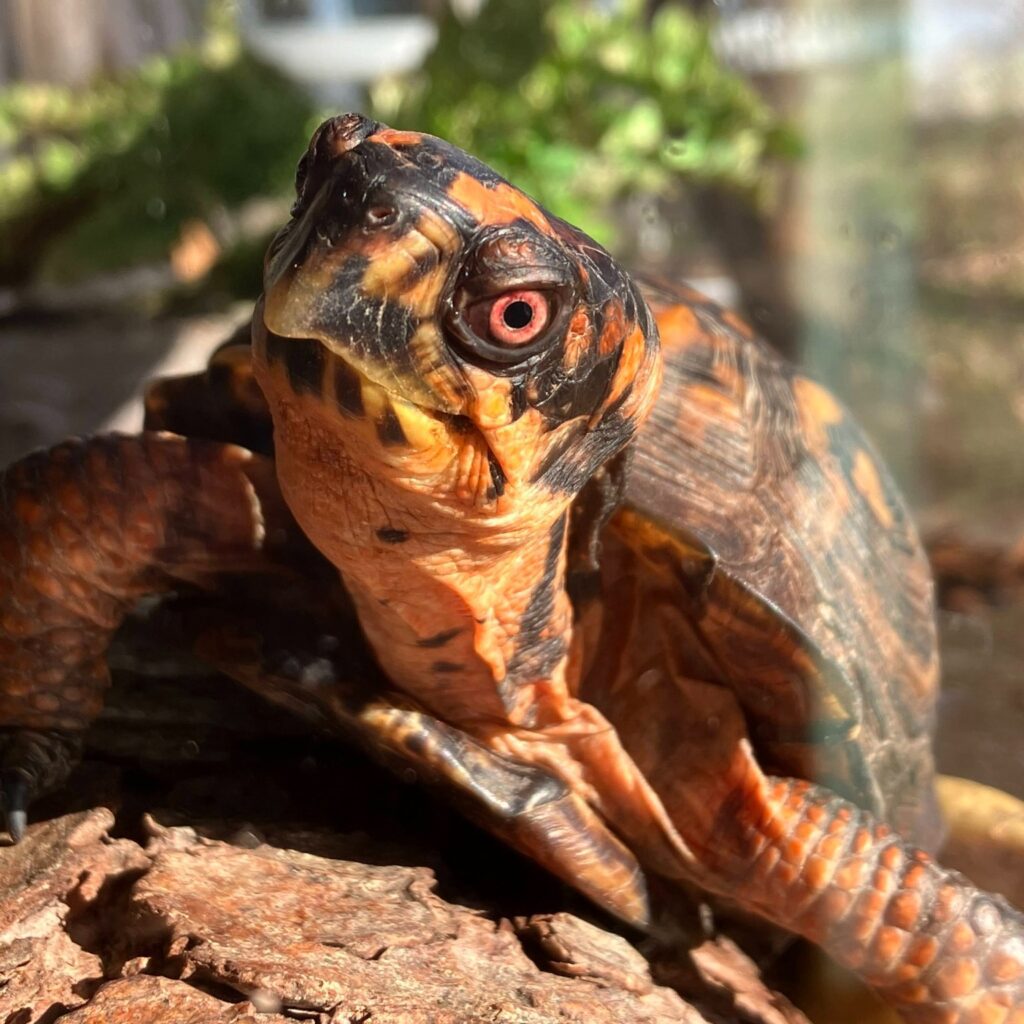
Alala & Aurora
Fallow Deer (Dama dama)
Not native to Land Between the Lakes, fallow deer are a European species that was introduced here in the early 1900s by people. While not widespread in Kentucky anymore, there is still a small remnant herd that lives around the Woodlands Nature Station. Fallow deer often have spotted coats that remain that way year-round.
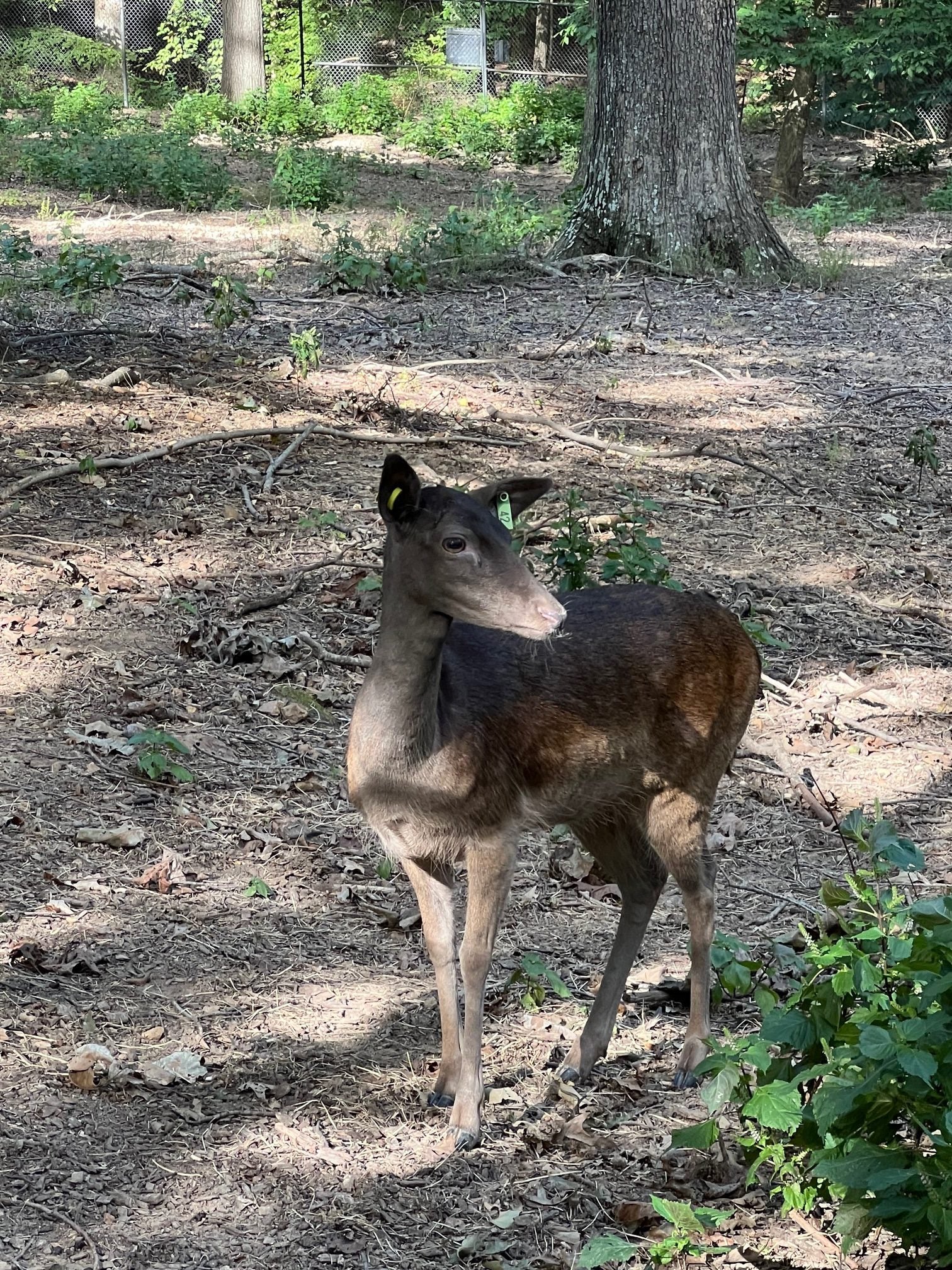
Sunny
White-tailed deer (Odocoileus virginianus)
Sunny the white-tailed deer was born at the Woodlands Nature Station after her mother was transferred here from the Salato Wildlife Education Center in Frankfort, KY. Unlike fallow deer, white-tailed deer only have spots for the first few months of their lives. They have made a strong comeback since their decline in the 1800s and early 1900s and are now very abundant in Land Between the Lakes.
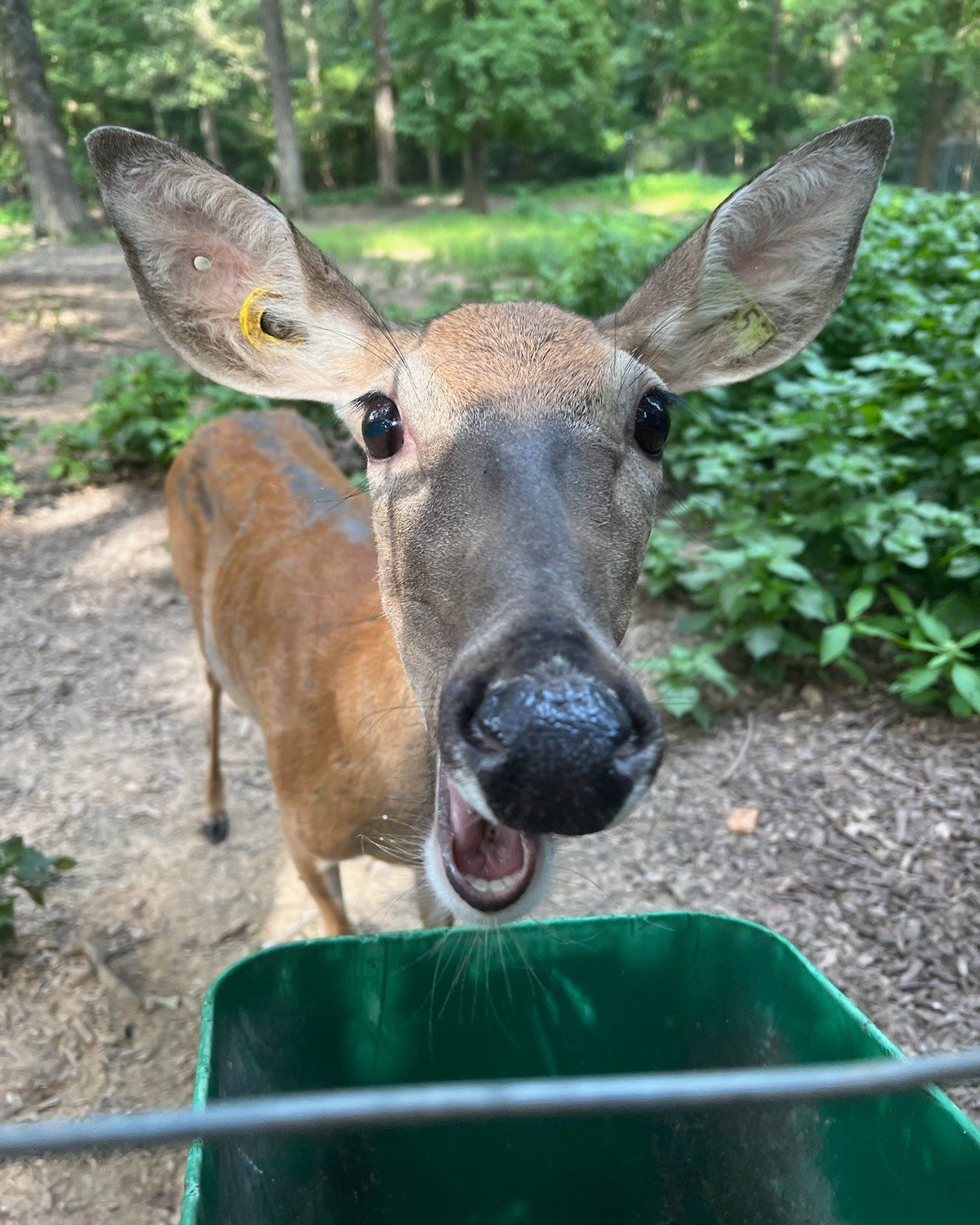
Wild Turkeys (Meleagris gallopavo)
Tom, our senior turkey, came to us from a turkey farm. Our younger three turkeys were all found as eggs in nests that had been mowed over and abandoned. They were hand-raised by staff at the Woodlands Nature Station. JJ, our smallest hen, was born with a sideways leg, but that doesn’t slow her down. Wild turkeys are another species that have made a strong comeback after facing a population decline in the early 1900s.
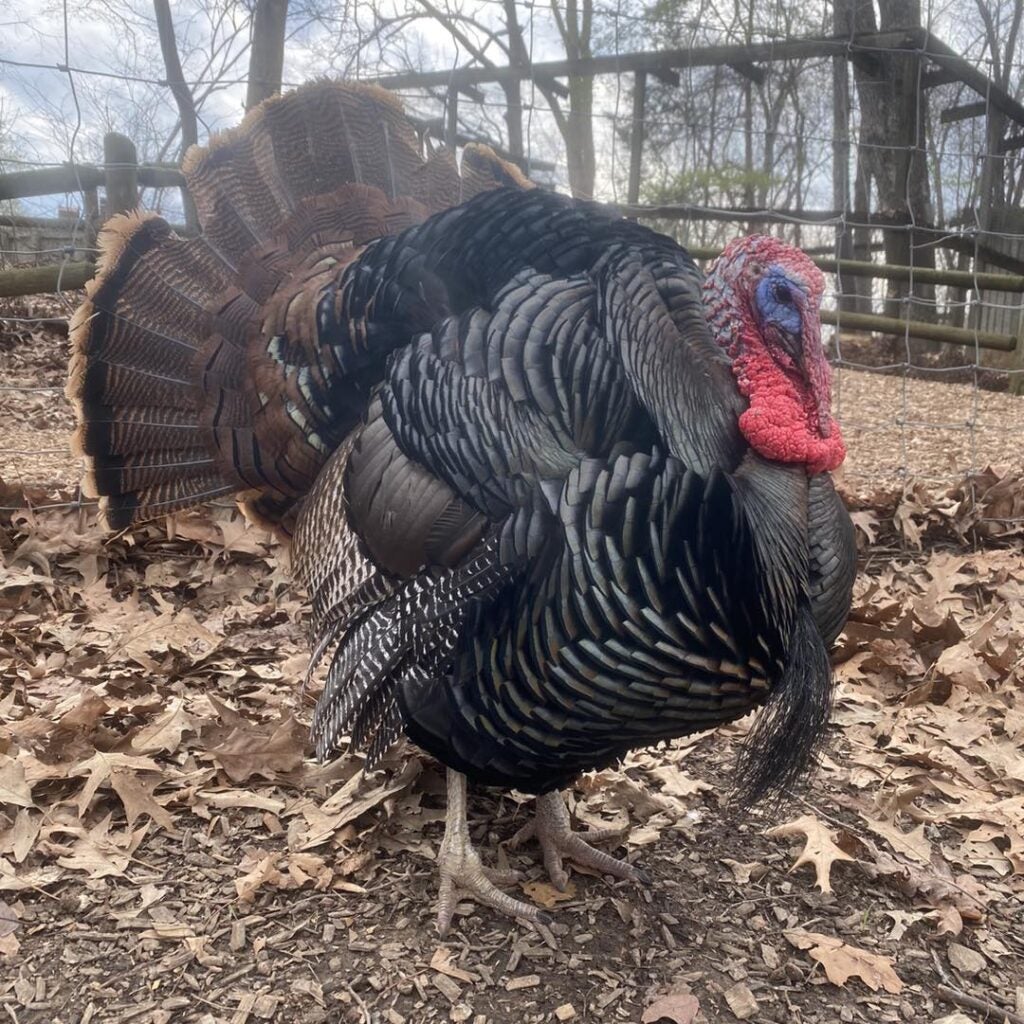
Billie
Virginia opossum (Didelphis virginianus)
A member of North America’s only species of native marsupial (pouched mammals), Billie the opossum was rescued from her mother’s pouch as a joey when her mother got hit by a car. Even though opossums can eat almost anything (including venomous snakes!), Billie was raised by people and became accustomed to relying on humans for food, so she cannot be released back into the wild.
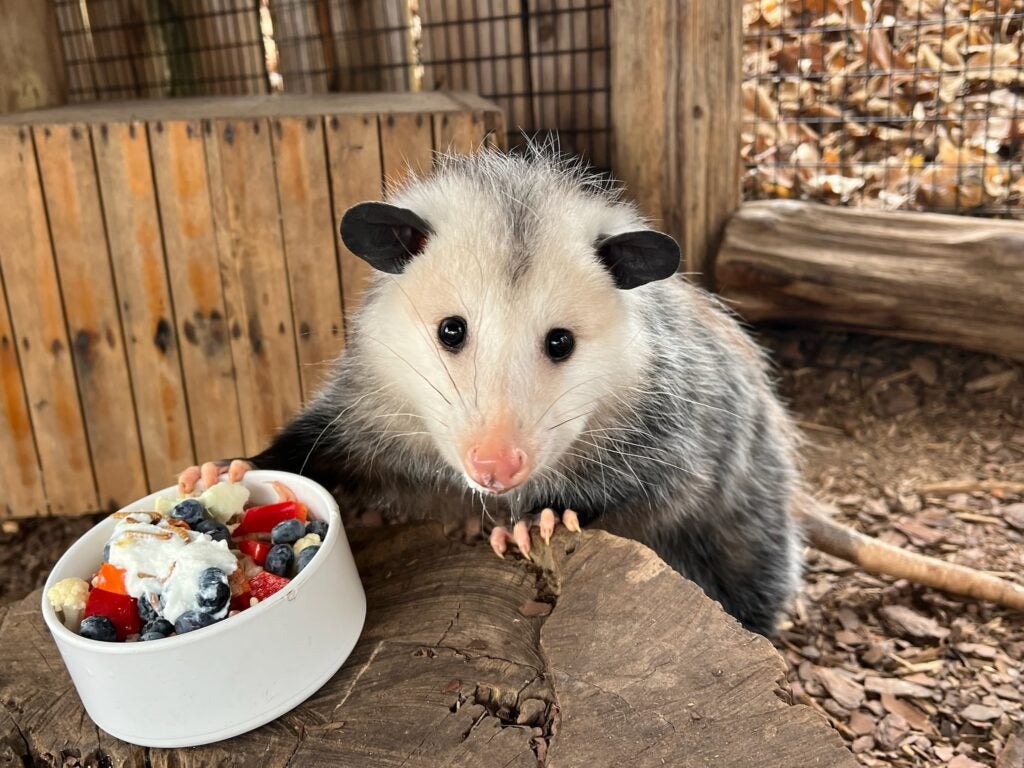
Vultures
You can find both black vultures and turkey vultures flying around Land Between the Lakes. There are currently two turkey vultures (Dragon and Reaper) and one black vulture (Grim) that call the Woodlands Nature Station home. They all obtained injuries from being hit by vehicles and can no longer fly properly as a result. Vultures are social birds, and you can often see wild vultures coming to visit our captive residents.
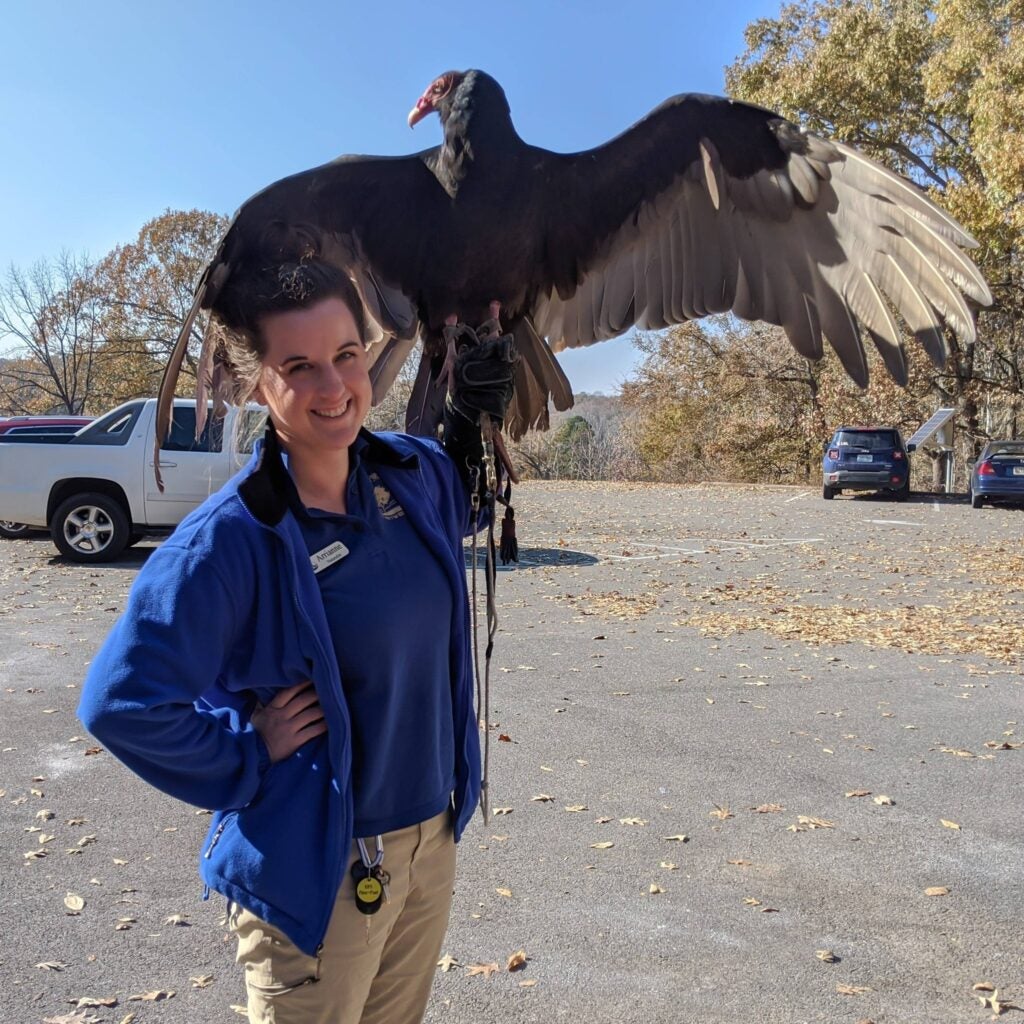
Southern Flying Squirrels (Glaucomys volans)
Believe it or not, flying squirrels are actually the most common species of squirrel in Land Between the Lakes. They are very rare to see, however, because of their stealthy, nocturnal nature. Our flying squirrels came to us from wildlife rehabbers after having been injured by people’s cats or dogs.
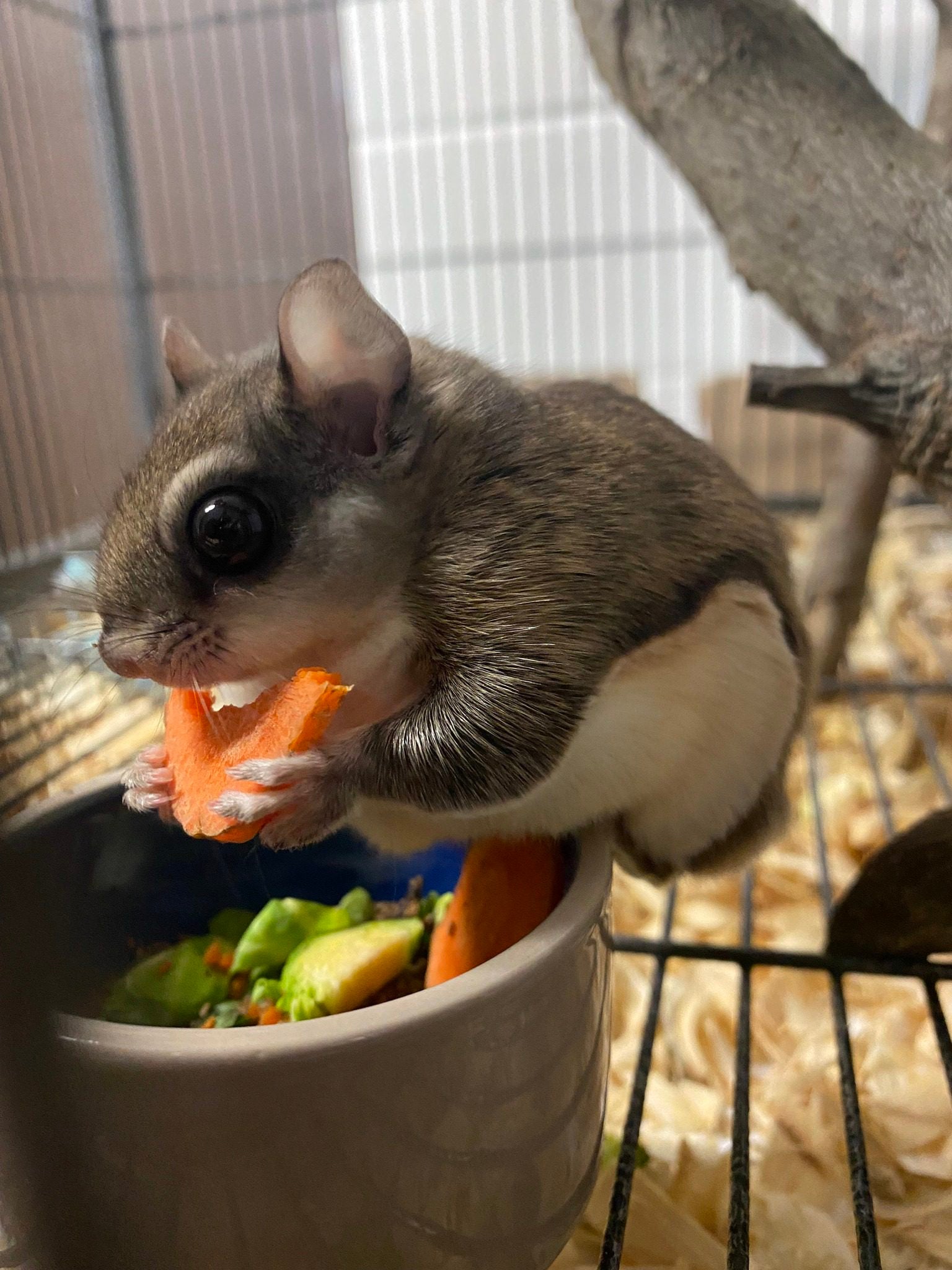
Amphibians
You can find a variety of amphibians, or animals that spend part of their lives in water, on display at the Woodlands Nature Station. Green tree frogs, spotted salamanders, eastern newts, and American bullfrogs can be seen here, and are just a small sample of the plethora of amphibians that can be found in Land Between the Lakes.
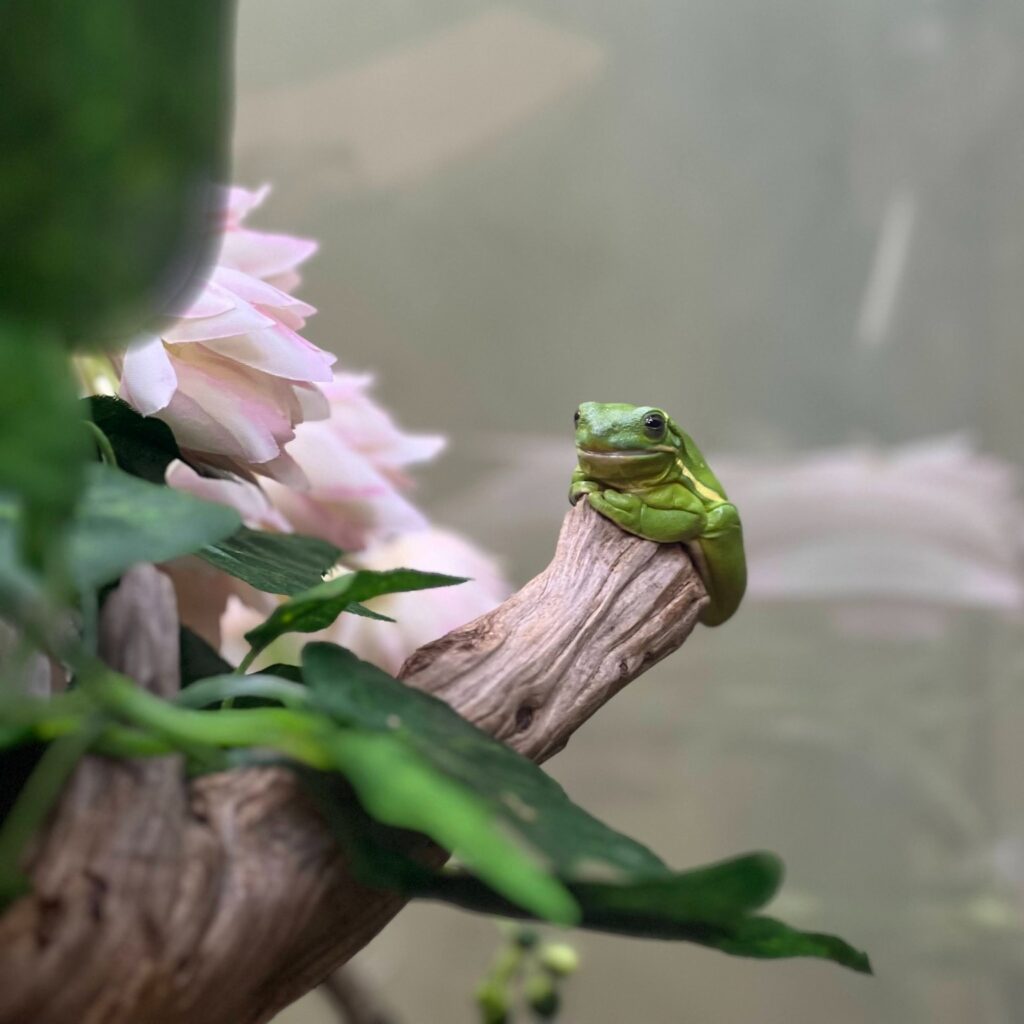
Venomous Snakes
Three out of the four species of venomous pit vipers that occur in Kentucky are on exhibit in the Woodlands Nature Station. This is a safe way to view these snakes up close in a way that you cannot in the wild. While there are ways to identify venomous snakes from afar, all rules have exceptions, and it is safest to give all snakes in the wild plenty of space.
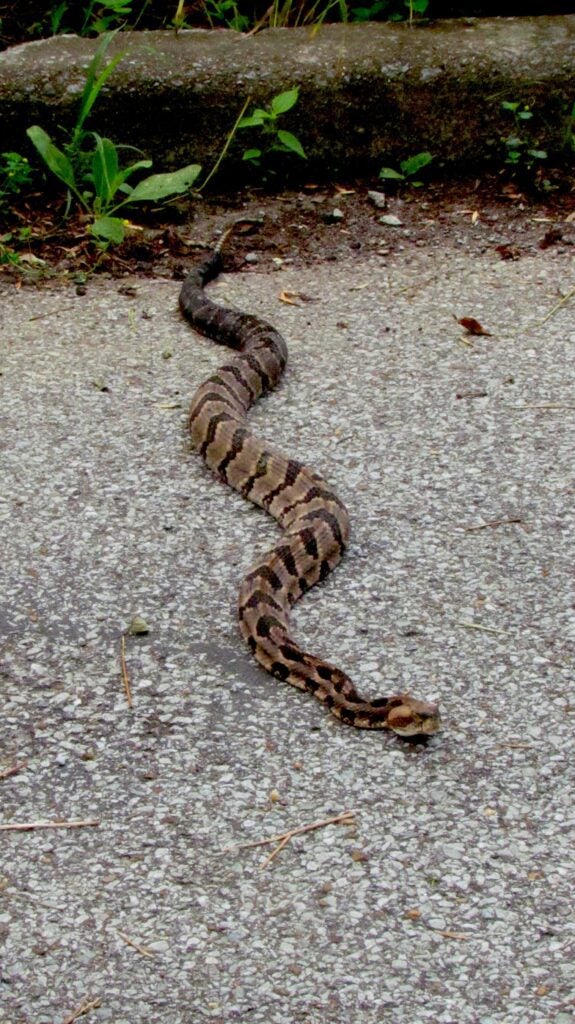
Nonvenomous Snakes and Lizards
In addition to venomous snakes, many species of nonvenomous snakes and lizards that are common in Land Between the Lakes can be seen at the Woodlands Nature Station. Many of our snakes were kept as pets until their owners could not care for them anymore. Our female rat snake, named Egg, is 6 feet long, although she may not look it when coiled up.
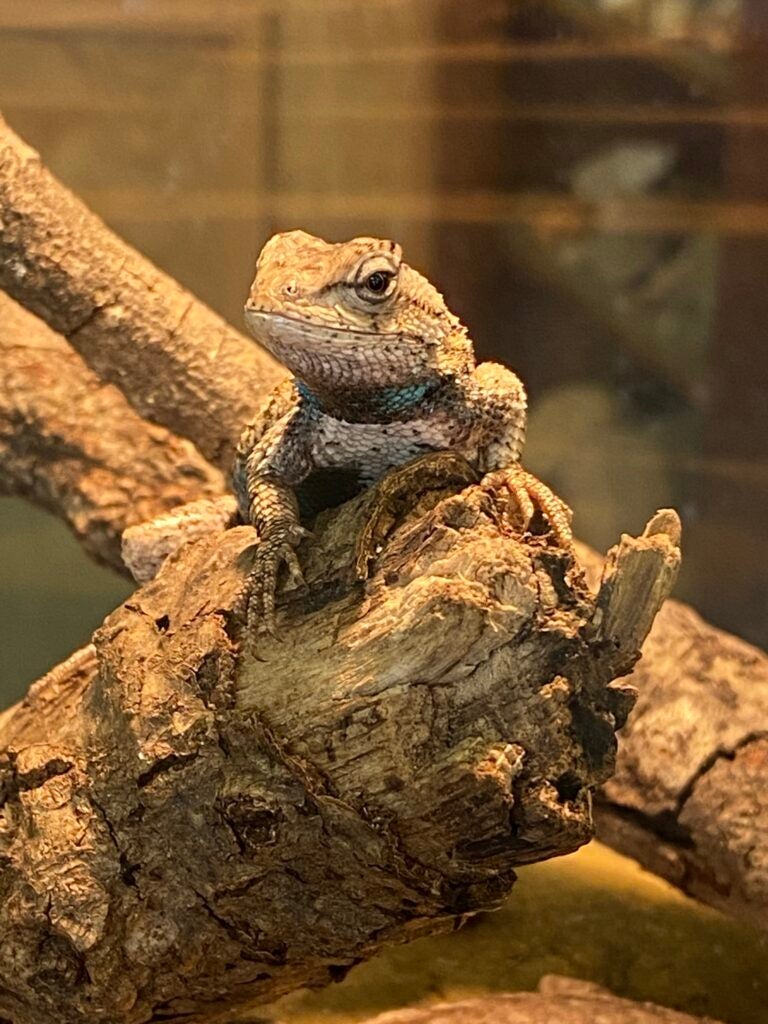
Spotted Gar and Fish
Gar are some of the largest fish found in the lakes surrounding Land between the Lakes. Peer into our fish pond to see these armored giants. Fully-grown spotted gar may grow to be almost five feet long. See more fish species in our indoor aquarium.

Ruby-throated Hummingbirds
From April to October, the Nature Station backyard fills with hummingbirds as they visit our feeders and native gardens. Some hummingbirds nest in the trees around the Nature Station and raise their young here, and some just pass through during their migration. During peak fall migration in August, as many as 200 hummingbirds may visit our gardens in a single day!
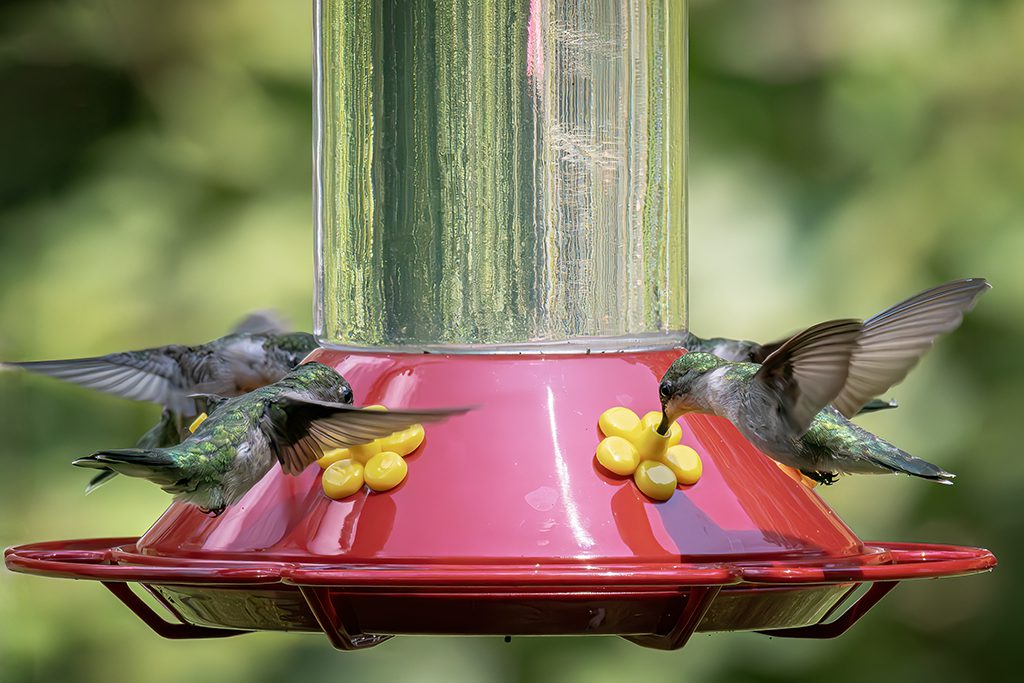
Purple Martins
The largest of the swallow family, purple martins are birds that rely on humans for nesting habitat in the eastern United States. Originally encouraged into Native American villages for insect control, these insect-eating birds still benefit us today. We provide gourd-shaped houses for our colony of purple martins in our parking lot. Feel free to observe them flying in and out to feed and care for their young over the summer.
